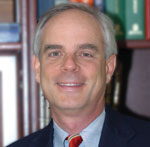Ask Dr. Barber
 by Dr. William Byron Barber II, M.D.
by Dr. William Byron Barber II, M.D.
Q. Dr. Barber, I am 58 years old and have an issue with man boobs. In my younger years I used to be heavy into weight lifting and used some HGH, and from that I developed man boobs. I am working out again after a 10 year layoff and when I work out my boobs just stick out. What can be done?
A. Enlarged breasts in males are called gynecomastia. In most cases the cause is idiopathic, meaning, we do not know why the person develops breast enlargement. The condition is very common in boys going through puberty and in most boys, will resolve on its own. In my experience, if the gynecomastia persists beyond age 21, it is not likely going to go away. Gynecomastia can occur in one or both breasts, but occurs most commonly in both. There can be enlargement of just the areola and nipple area, but in most males, the entire breast enlarges. Only rarely will a male breast actually look like a female breast, and in these situations, there is often a hormone imbalance. Certain drugs are associated with male breast enlargement including heavy marijuana use, certain epilepsy drugs, female hormones that are used in treating prostate cancer, and some steroids.
In your particular case, you imply that human growth hormone may have played a role in the development of gynecomastia, and while that is certainly reported, it is not common. In my experience, gynecomastia in body builders is more commonly related to other drugs, such as anabolic steroid use, than the use of HGH alone. In addition, gynecomastia is often accentuated in body builders because of their large pectoralis muscles which make the breasts look larger.
As for treatment, surgery is the treatment of choice, combining liposuction to remove fat and shrink the overall volume of the breast, and if necessary, direct excision of the actual breast tissue. Breast tissue is dense, similar to hard rubber, and does not respond to liposuction. So to get the dense breast tissue that usually is just deep to the nipple area, a small incision is made around the bottom of the areola, and the tissue is removed under direct vision. The most common complication of gynecosmastia surgery is skin irregularities after the removal of the tissue, which is more common in older males compared to those in their twenties. I would suggest a consultation with a board certified plastic surgeon to be evaluated for your breast enlargement.
Q. I had a breast augmentation about 2 years ago. I love my breasts, but one of my nipples is completely numb. Will this ever get better?
A. I am sorry to say that the numbness in your nipple area likely will not get better. When I advise patients considering breast augmentation, I inform them that there is about a 1% chance that the sensation in the nipple areola area will be decreased or even completely lost. It is not unusual for the nipple area to be numb right after surgery, and in fact, can take up to a year for the sensation to return in some patients. I have, however, only rarely seen sensation come back after a year following surgery. This loss of sensation does not affect the erectile capability of the nipple and does not affect your ability to breast feed. I am sorry that you have experienced this rare downside of breast augmentation, but I am glad that you are otherwise happy with your results.
William Byron Barber II, M.D.
has been practicing plastic surgery in Greensboro for 20 years and is certified by the American Board of Plastic Surgery. He is Chief of Plastic Surgery for Moses Cone Health System, and is an active member of numerous local, regional and national plastic surgery associations.
Visit his website at: www.BarberPlasticSurgery.com or e-mail him at: AskDrBarber@BarberPlasticSurgery.com

